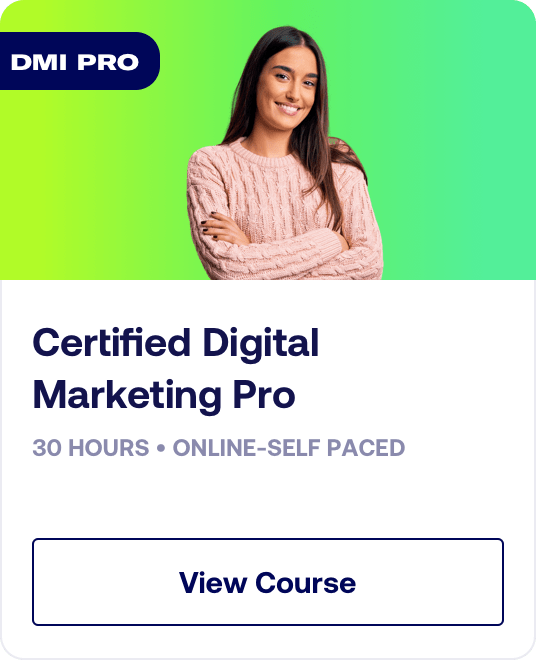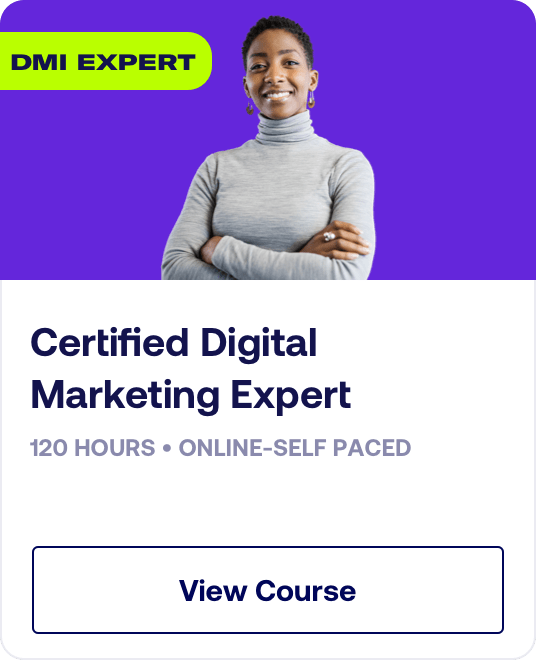Digital Marketing - Study Notes:
Implementing omnichannel marketing
Omnichannel marketing, or marketing across several channels, requires a seamless, connected brand identity across all ecommerce touchpoints. An omnichannel strategy puts the customer in control, allowing them to access a brand on their own terms.
You can use the following key technologies for omnichannel marketing:
- Customer Data Platform (CDP): This is a piece of software that combines data from multiple tools to create a single centralized customer database. CDPs are increasingly popular with digital marketers.
- Customer Relationship Management (CRM) platform: This is a technology solution that helps businesses manage communications with their current and potential customers.
- Marketing Automation Platform (MAP): This is software that automates marketing communications across numerous channels, including email and social media.
Data privacy
You must abide by data privacy regulations when collecting and synthesizing customer data. These include:
- EU GDPR (General Data Protection Regulation)
- CCPA (California Consumer Privacy Act)
- POPI – South Africa’s Protection of Personal Information
Conversion Rate Optimization (CRO)
Conversion Rate Optimization (CRO) is a highly effective way of improving ecommerce performance. It is driven by a scientific study of consumer purchase paths.
Example: Pet Business Insurance
Pet Business Insurance increased its conversion rate from 3.1% to 8% by executing a CRO strategy. The company had a generic Get a free quote button on its homepage. However, it tested the following to find improvements that would optimize the conversion rate:
- It changed the color of the button to green.
- It updated the call to action to Get Peace of Mind.
- It added new value propositions in the on-page content to lead into the conversion button.
- It tested new imagery to support this revised value proposition.
Example: comScore
comScore achieved a 69% increase in conversions by testing the impact of customer testimonials on its homepage. The company hypothesized that putting a greater emphasis on customer testimonials would have a positive impact on conversions. Therefore, it devised a three-way multivariate split test to try out different testimonial designs and placements.
- Variation 1 featured a vertically aligned testimonial, alongside product descriptions, with the customer’s logo prominently showing at the top.
- Variation 2 placed a horizontal testimonial below the product descriptions without a logo.
- Variation 3 also used a horizontal placement below the product description but, this time featuring the customer logo.
Variation 1 came out on top with a +69% increase in conversions, while Variation 3 achieved a +30.5% increase ahead of Variation 2 with +14.8%.
Key steps in a CRO implementation process
An effective CRO process includes several key steps:
- Identify your business and marketing goals. All tactics should be aligned with the relevant goals.
- Select a variable to test. Avoid comparing too many variables at once, as this can make it difficult to identify the variable that makes the difference.
- Construct a hypothesis that can be verified or falsified using data, tied to your business or marketing goals.
- Create variants of your ecommerce experience. Again, ensure you don’t have too many variants in play at the same time.
- Split your traffic, sending different segments to the different experiences.
- Analyze the results. Ensure you can map the results to the variants.
- Implement changes and measure the impact.
CRO involves testing two or more variables to measure the changes in consumer behavior. You can use two key types of testing:
- A/B testing, where you compare two variables
- Multivariate testing, where you compare more than two variables
Improving ecommerce performance
You can use a variety of sales tactics to improve ecommerce performance and optimize conversions:
- Coupons and codes: Don’t underestimate the ‘power of free’. People like to feel that they are getting a bargain, especially if it’s a reward for their loyalty.
- Dynamic content: Create content that responds to the customer’s journey.
- Similar product recommendations: Show customers that you understand them by recommending similar products. This can drive conversions through cross-selling opportunities.
- User-generated content: Customers tend to respond well to user-generated content, especially reviews. Such content is seen to be authentic and trustworthy.
- Live chat: A live chat system enables you to interact with the customer and address any concerns that might be preventing them from converting.
Matthew Santos
Matthew Santos is the Vice President of Products & Strategy at Neil Patel Accel. He initially built the four major product offerings they provide to customers, and continues to oversee three of those: SEO, CRO, and Email Marketing. He has been in the industry for almost 10 years, primarily focused on Earned Media digital tactics.

Clark Boyd
Clark Boyd is CEO and founder of marketing simulations company Novela. He is also a digital strategy consultant, author, and trainer. Over the last 12 years, he has devised and implemented international marketing strategies for brands including American Express, Adidas, and General Motors.
Today, Clark works with business schools at the University of Cambridge, Imperial College London, and Columbia University to design and deliver their executive-education courses on data analytics and digital marketing.
Clark is a certified Google trainer and runs Google workshops across Europe and the Middle East. This year, he has delivered keynote speeches at leadership events in Latin America, Europe, and the US. You can find him on X (formerly Twitter), LinkedIn, and Slideshare. He writes regularly on Medium and you can subscribe to his email newsletter, hi, tech.

Neil Patel
Neil Patel is the co-founder of NP Digital. The Wall Street Journal calls him a top influencer on the web, Forbes says he is one of the top 10 marketers, and Entrepreneur Magazine says he created one of the 100 most brilliant companies. Neil is a New York Times bestselling author and was recognized as a top 100 entrepreneur under the age of 30 by President Obama and a top 100 entrepreneur under the age of 35 by the United Nations.

Brooke Hess
Digital Marketing Strategist and VP of Paid Media (NP Digital)
Brooke Hess is a highly skilled and passionate digital marketer with an extensive background in the paid media space. While leading a team of Directors across strategy, paid social, paid search, and programmatic media, Brooke oversees paid media strategy for priority clients and develops effective strategies for new clients. Brooke is also recognized as a high achiever in providing effective educational opportunities for paid media professionals to ensure they get the most from their paid media strategies.








